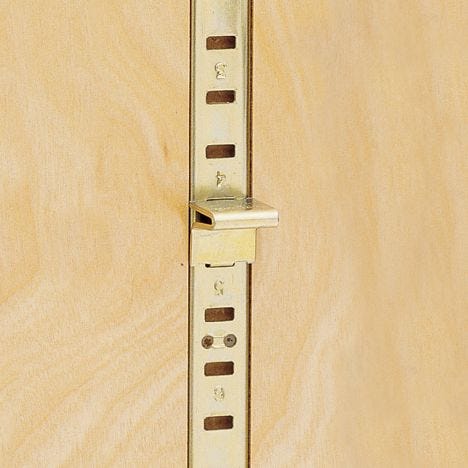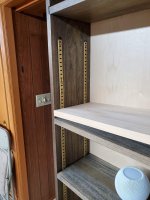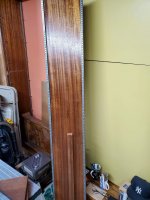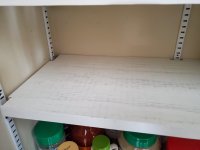In the 1970s, Charles Webb made bookcases that used wires to support the shelves. They were similar to this product, and may have been identical:
Magic Wire
Charles Webb studied architecture at RISD. He wanted to make a bookcase in which a shelf could be entirely filled with law books without undue strain. He determined that a shelf made of oak, 3/4 inch thick, and 31 1/2 inches long, was suitable for long-term use with heavy books. Fifty years later, the shelves that I still see look brand new. They were finished with some version of Sherwin-Williams KemVar varnish, which took 30 days to fully cure.
It is really unfortunate that the designs of Charles Webb are no longer in production. They were beautiful, functional, and able to be made by any competent cabinetmaker. He had a tiny showroom in Harvard Square, near an ice cream shop. Students would realize that they would need bookcases after graduation, and another sale would be made.




